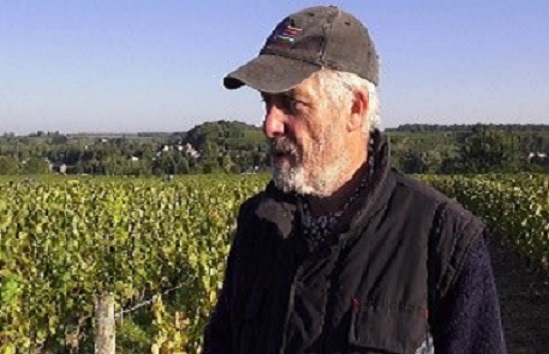The grape is part of jug wines from California and is found in white wines from South Africa… it is only in the Loire Valley that the Vouvray appellation reaches its full potential – running from steely to robustly sweet. A bit of caution is necessary: finding Vouvray on the label does not guarantee a good Chenin Blanc. To prevent an OOPS, select from the best producers.
• 2019 Domaine Pinon, Vouvray, Sec. 100 percent Chenin Blanc
Vouvray is a white wine derived from Chenin Blanc grapes cultivated along the banks of the Loire River in the Touraine district of France, east of the city of Tours, in the commune of Vouvray. The Appellation d’Origine controlee (AOC) is dedicated almost exclusively to Chenin Blanc, an obscure and minor grape Arbois is permitted (but rarely used).

Viticulture has a long history in this area and dates back to the Middle Ages (or earlier) when the
Catholic Church included vineyards at the local monasteries. The grape is also known as Pineau de la Loire and may have originated in the Anjou wine region in the 9th century and migrated to Vouvray.
In the 16th and 17th centuries Dutch merchants supervised the plantings of vineyards in the area to be used for the wine trade with markets in London, Paris and Rotterdam. Grapes from the Touraine area were coordinated into a mass blending labeled as Vouvray. Wine cellars were built from caves created from the excavation of tuffeau (limestone) rocks that were used to build the Chateaux of the Loire Valley. The cold, steady temperature of the cellars was ideal for the advancement of sparkling wines made on the tradition methode champenoise system and became popular in the 18th and 19th centuries. Vouvray became an AOC in 1936 and includes the village of Vouvray plus 8 nearby villages (Chancay, Nouzilly, Vernou-sur-Brenne and Rochecorbon).
The Vouvray region is located at the top of a plateau, dissected by the small streams and tributaries of the Loire. The streams contribute to the unique climate conditions that promote development of the Botrytis cinerea fungus that causes noble rot used to produce sweet dessert style wines.
The climate is mostly continental with some maritime influence from the Atlantic Ocean although it is located more than 100 miles to the west. The wines are dependent on the climate with significant vintage variation each year due to the variable climate. Cooler climate years shift the bulk of production towards drier styles of wine including sparkling Vouvray. Warmer climate years promote production of sweeter, dessert style wines.
The northern location and relatively cooler climates make harvests in Vouvray one of the last to be completed in France, often running through November. Vouvray styles range from dry to sweet and still to sparkling and noted for delicate floral aromas and bold taste.
Hues range from medium straw (for sparkling wines) through the yellow spectrum to deep gold (for aged sweet Moellex). In general, the aromas border on the milder side of intense and send hints of pear, honeysuckle, quince and apple (green/yellow) to the nose. There may be gentle hints of ginger and beeswax (suggesting the presence of noble rot… think Sauterne). The flavors on the palate range from lean, dry and minerality to fruity and sweet (depending on style).
Sec presents a dry wine (less than 8 g/L of residual sugar; the driest variation of Vouvray) and is usually brisk and delivers minerality.

Pinon vineyards are noted as among the finest in the region of Vouvray and owned by the family since 1786. Francois Pinon started his career as a child psychologist, taking over the estate from his father (1987). Pinon is considered a serious winemaker and his focus is on organic viticulture and minimal intervention in winemaking. The estate is currently directed by Julien Pinon.
The vineyards are located in the Vallee de Cousse where the clay and silica soil cover a base of limestone with flint (silex). Pinon follows a system that includes the plowing of the vineyard, the avoidance of chemical fertilizers and pesticides and hand harvesting. All new plantings are done by selection massale (a French wine growing term for the replanting of new vineyards with cuttings from exceptional old vines from the same or neighboring property); no nursery clones are used. His vines average 25 y/o. The estate was certified organic in 2011.
Alcoholic fermentation occurs in wood barrels and aged in stainless steel or foudres (large casks, approximately twice the size of barrique Bordelaise) to reach a balance between fruit and reduction. There is one racking to remove the heavy lees and the wine remains on its fine lees until bottling, which occupies 12 months after the harvest to complete the wine. Pinon gently filters his wines to ensure their stability and ageing potential.
Pinon selects 0.6 hectares of flatter, more clay-forward areas for its sec bottling. The vines average 40 years of age. The fruit is hand-harvested, rigorously sorted and whole-cluster pressed. The juice flows by gravity into tanks for a spontaneous native-yeast fermentation that lasts 2-3 months stopping naturally in Pinon’s cold cellar carved into the tuffeau hillside. The wine is aged on its fine lees for 4-5 months in a mix of used oak ranging from 500-liter oak demi-muids to 20-hectoliter foudres.
• 2019 Domaine Pinon Notes

Presents pale yellow to the eye and delivers citrus and yellow apple to the nose along with hints of lemon zest and orange peel. The palate discovers fruit enhanced by spice and citrus. The long finish delivers minerality that is balanced and refined. Pairs well with salmon and tuna.
© Dr. Elinor Garely. Ovaj članak o autorskim pravima, uključujući fotografije, ne smije se reproducirati bez pismene dozvole autora.
Pročitajte 1. dio ovdje: Učenje o vinima doline Loire u nedjelju u New Yorku
Pročitajte 2. dio ovdje: Francuska vina: Najgora proizvodnja od 1970
ŠTA UZIMATI IZ OVOG ČLANKA:
- Vouvray is a white wine derived from Chenin Blanc grapes cultivated along the banks of the Loire River in the Touraine district of France, east of the city of Tours, in the commune of Vouvray.
- The grape is also known as Pineau de la Loire and may have originated in the Anjou wine region in the 9th century and migrated to Vouvray.
- The cold, steady temperature of the cellars was ideal for the advancement of sparkling wines made on the tradition methode champenoise system and became popular in the 18th and 19th centuries.























